As Anne Marie McStocker pulls in the draft net she pauses every now and again to remove tiny fish that have become entangled in it, and throws them back into the lough.
The boat is rocking over a place known as the Foot of the Hole, the deepest part of Lough Neagh, and one of the best places for fishing. As the stones weighing down the net start clinking on to the deck, her husband, Gary McErlain, moves from his station at the other pulley and lifts the draft net into the boat. Inside, a dozen eels are wriggling. Not a great catch. He empties them into a barrel and McStocker goes back to the rether – the local word for the tiller – and moves on to another location, to start the process all over again.
Your helper needs to be on the same wavelength. If you catch you earn; if you don't catch you don't earn. Very few people want to work on that basis

In her blue jumper, red dungarees and yellow oilskin, McStocker is the only shot of colour on a damp, drizzly day. She’s one of three eel fisherwomen who work the lough in all weathers. She started doing it when her father-in-law retired from the boat and her husband found it difficult to find anyone willing to join him.
“Your helper needs to be on the same wavelength,” she says. “If you catch you earn; if you don’t catch you don’t earn. Very few people want to work on that basis, so I became a substitute at short notice.”
Do they ever end up arguing? They both laugh.
“Fishermen have a short fuse, because they’re always tired,” says McStocker. “When I first started doing it I told Gary every second day that I wouldn’t be back. In year two it was down to about once a fortnight!”
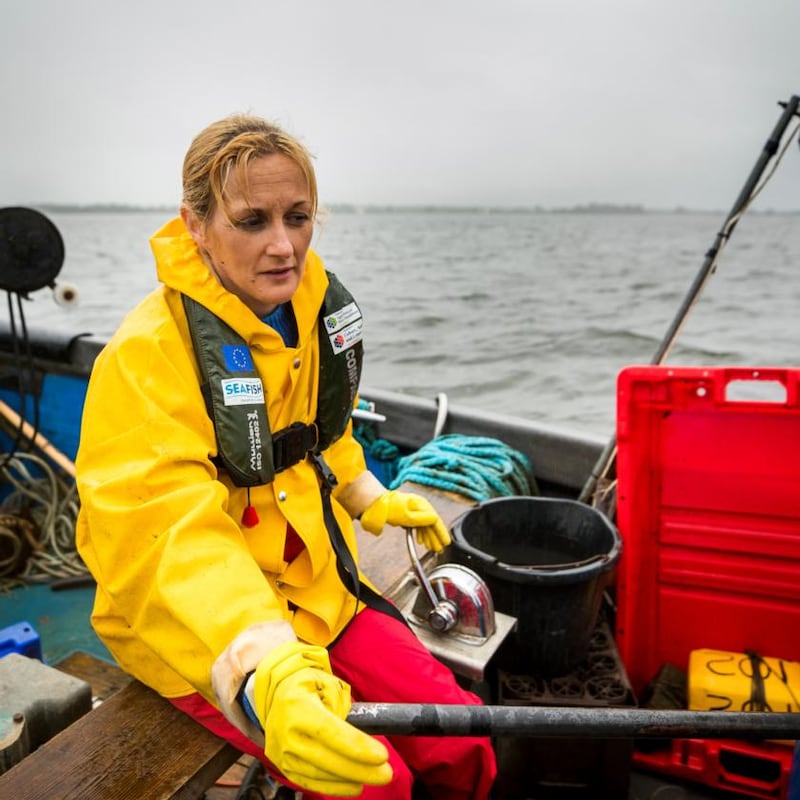
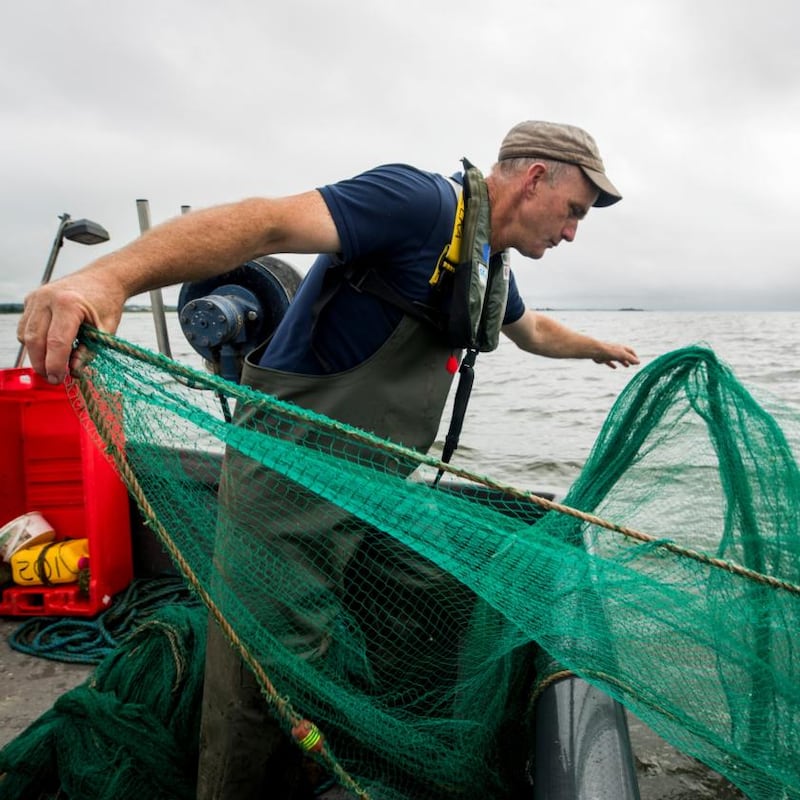
McStocker is also a teacher, and fits the eel fishing in around her timetable, which often means working early in the morning or late into the evening.
“I was shocked at how relentless it is. I’ve developed a profound respect for Gary and the other fishermen.”
As every schoolchild learns, Lough Neagh is the largest lake in Ireland or Britain, bordering five of Northern Ireland's six counties, but otherwise it's almost unknown to most Irish people. The sand barges we encounter, sending waves that rock the boat even more, are a reminder that the earl of Shaftesbury still owns the lake bottom, a legacy of the Plantation. Fishing rights on the lake were disputed over the centuries, until a co-op led by a local curate finally took control.
Cathy Chauhan, the marketing manager for Lough Neagh Fishermen's Co-operative, knows the fishery inside out. "When I was a child I would have pegged the lines for my grandfather. You have to untangle them, clean the hooks and clean off all the debris that would be on them."
The Bann is the critical corridor for the eels, which live almost all their lives in Lough Neagh, leaving it only once, to breed in the Sargasso Sea, across the Atlantic
There are two kinds of eel fishing, the draft netting done by McStocker and McErlain, and line fishing, where lines carrying hundreds of baited hooks are put into the water overnight and collected in the early morning. Eels are also caught at the trap on the River Bann at Toomebridge, just outside the co-op door, at certain times of the year.
The Bann is the critical corridor for the eels, which live almost all their lives in Lough Neagh, leaving it only once, to breed in the Sargasso Sea, on the other side of the Atlantic.
"One of the fisheries scientists we work with put hydroacoustic tags on some of the eels. He's told us that five signals were picked up by researchers in Donegal, which tells us that the eels know to hang a left at the mouth of the Bann," says Chauhan. After breeding, the larvae drift back towards Europe, making the transition from seawater to freshwater, although they do not necessarily return to the original river.
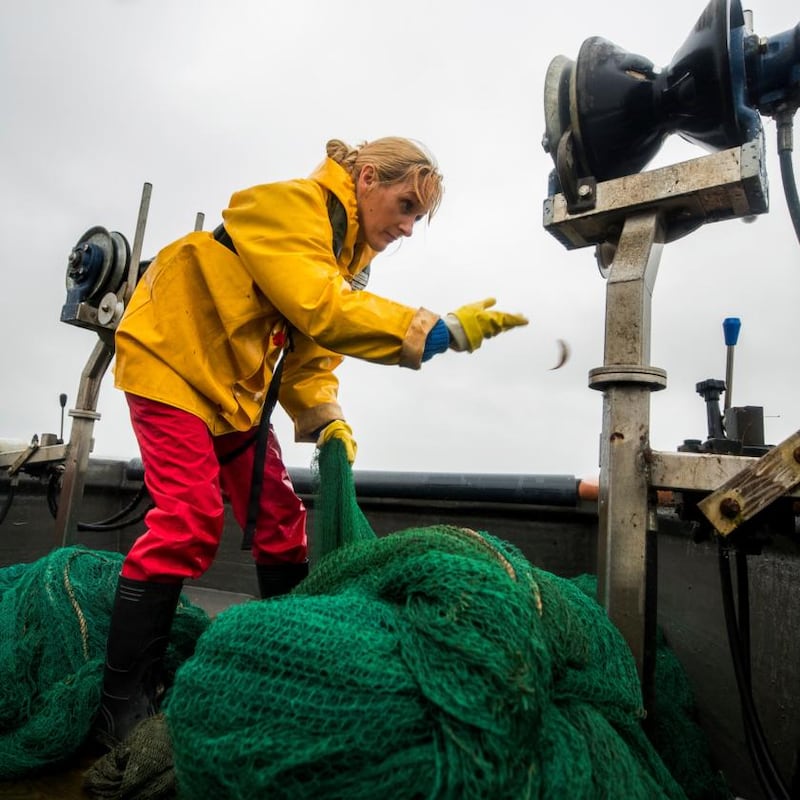
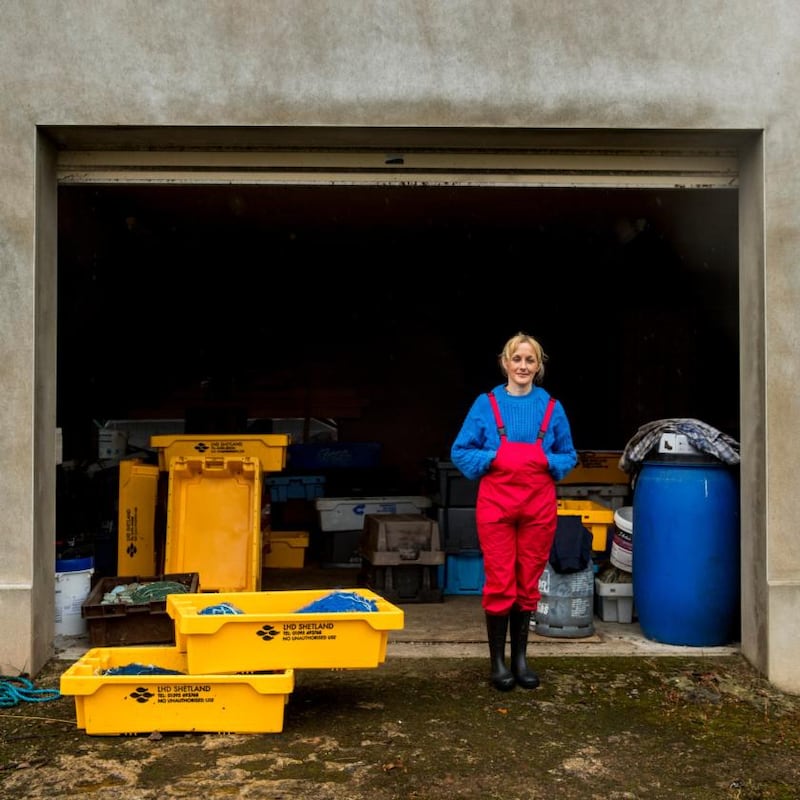
Globally, eels are an endangered species. The fishing on Lough Neagh, the largest commercial wild-eel fishery in Europe, is tightly controlled, with an annual quota and regular fishery patrols. The co-op also helps the incoming elvers get up the Bann towards the lough.
Chauhan leads the way to the processing area, where thousands of live eels are held in tanks, waiting to be packed. Chauhan’s boss, Pat Close, grabs one and holds it firmly, with one hand close to the head and the other near the tail. They do bite, and these days there’s another B word in the eel lexicon: Brexit.
According to Close, a no-deal Brexit would be catastrophic for the co-op’s exports. Current rules do not allow eels to be imported from outside the European Union, on conservation grounds.
The co-op is awaiting a decision on a case it has submitted to the EU’s scientific review group, outlining its conservation measures and restocking programme, to find out if it will be allowed to continue to trade.
I'd eat eel maybe five times a week. My husband would have the pan on for breakfast when he comes in from the fishing. Sometimes I'll mix it with rice and peas for a kind of kedgeree
A river of eels are writhing their way down the line to be packed into perforated bags and then into boxes. Their movements are sinuous, and it’s mesmerising to watch thousands of S shapes slithering along the grader. I’m not at all surprised to learn that the word for it is sinusoidal. The live eels are flown the same day to Britain and the Netherlands, where jellied and smoked eels are popular.
After all that it’s time for my first taste. Chauhan is breaking me in gently; she starts with some eel pâté that she has made. It’s not dissimilar to smoked-mackerel pâté, and I follow it up with some smoked eel on brown bread.
At the Lough Keeper's Cottage, where the Toome Canal meets the Bann, Úna Johnston has the pan on in her little cafe for a traditional eel supper. "I'd eat eel maybe five times a week. My husband would have the pan on for breakfast when he comes in from the fishing. Sometimes I'll mix it with rice and peas for a kind of eel kedgeree."
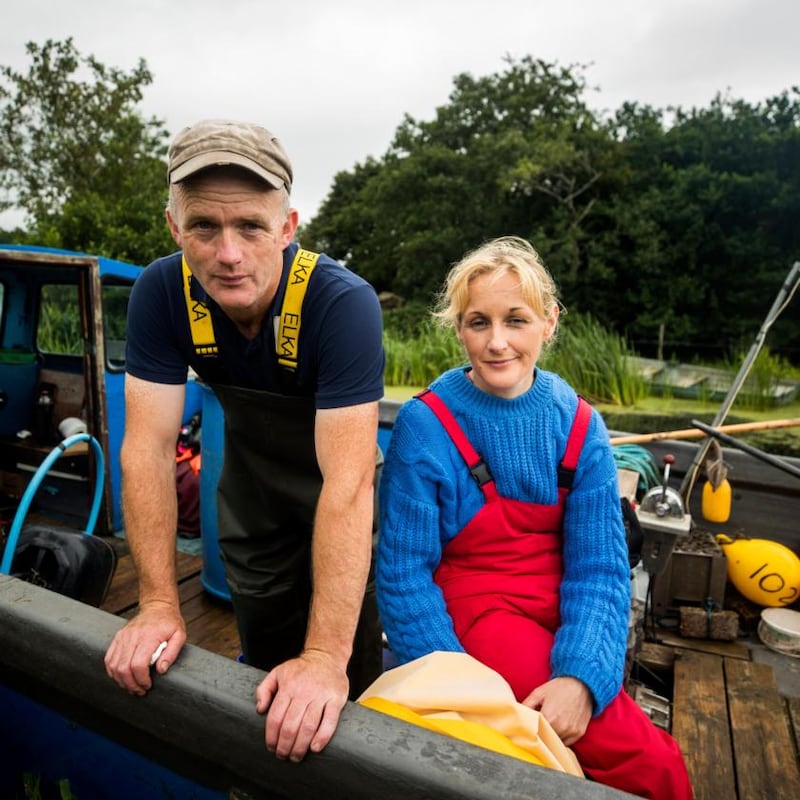
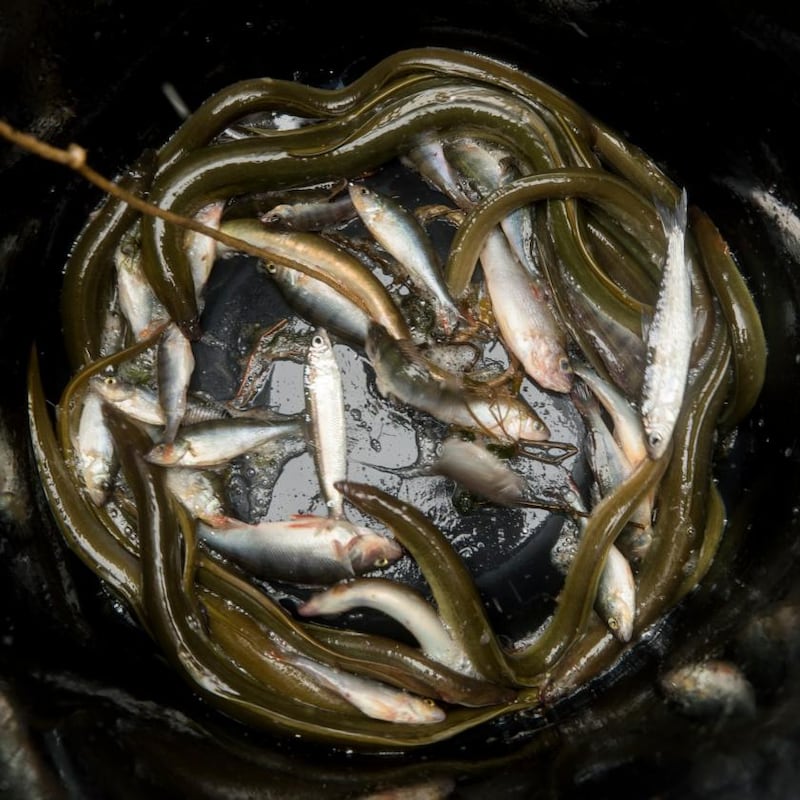
Johnston, Chauhan, McStocker and others, including the Lough Neagh Partnership, are working together to make the area better known, and to provide activities that give people access to the heritage, traditions and natural beauty of the lough.
While I'm waiting for the eels to cook I take one of their kayaks, with Joan from Mid Ulster Canoe & Kayak club as my guide. Out on the lake, the land I point to is actually only the other side of one bay, she tells me. Up to 30km long and 15km wide, Lough Neagh really is an inland sea. Returning along the Bann, I count 13 herons in one tree, an impressive roost and a sign of how healthy the fishing must be.
Back at the cottage, Johnston serves up a half-dozen eel cuts on a bed of onions with home-made soda farls. It’s delicious, falling easily off the central bone, with a texture similar to monkfish. The trick, she says, is long and slow cooking first, followed by crisping in the pan.
Johnston, who lives along the lakeshore, worries that the tradition will fade, with younger people reluctant to commit to the hours and uncertainty that go with the fishing.
“My husband is 64, and he’s one of the younger ones now. Getting up at half-three, it’s in their blood. It’s a passion. Even if they weren’t getting paid they’d still do it. But it doesn’t pay for the young people.”
Eels are full of good oils, and around here people still believe in the oil as a rub for rheumatism and arthritis. You mix it with poitín
She shows me the oil from cooking the eels that she has saved in a jar. “Eels are full of good oils, and around here people still believe in the oil as a rub for rheumatism and arthritis. You mix it with poitín.”
After my eel pâté, smoked eel and eel supper, I’m still not finished with eating eel. Chauhan gives me a bag of eels (thankfully no longer alive) and pollan – a fish unique to Ireland – and sends me off to meet one of Northern Ireland’s leading chefs, Ian Orr.
Perched in the kitchen at Ardtara Country House, I watch as he chops them up, sears them and puts them into a pan with some MacIvors cider to braise in the oven.
“Eel can be a bit of a hard sell on a menu,” he says, “but here I’m pairing them with sugar-pit pork from local producers. It’s my version of surf and turf. I love using local products.” Orr makes a sauce with the cider and serves the dish with burnt apple puree and crispy cavolo nero from Ardtara’s garden. It’s a great combination, and a good introduction to eel for the wary.
Orr is also delighted with the pollan, which he fries and serves with charred tomatoes and cucumber and a salsa verde. Lough Neagh pollan has just been granted Northern Ireland's first Protected Designation of Origin mark (similar to those for Parma ham and Feta cheese), which will be celebrated at the River to Lough Festival next Saturday.
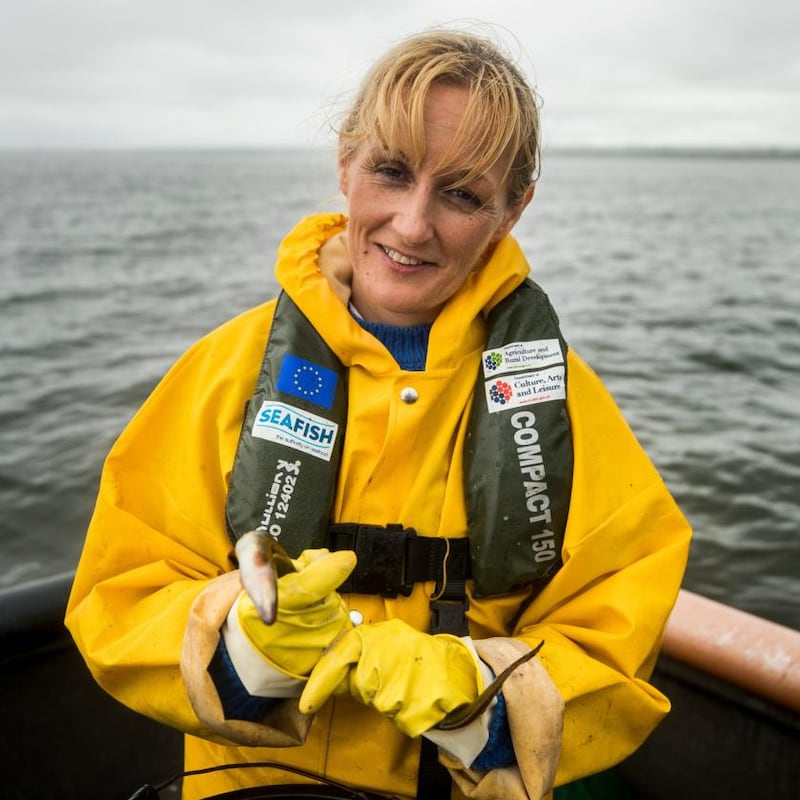
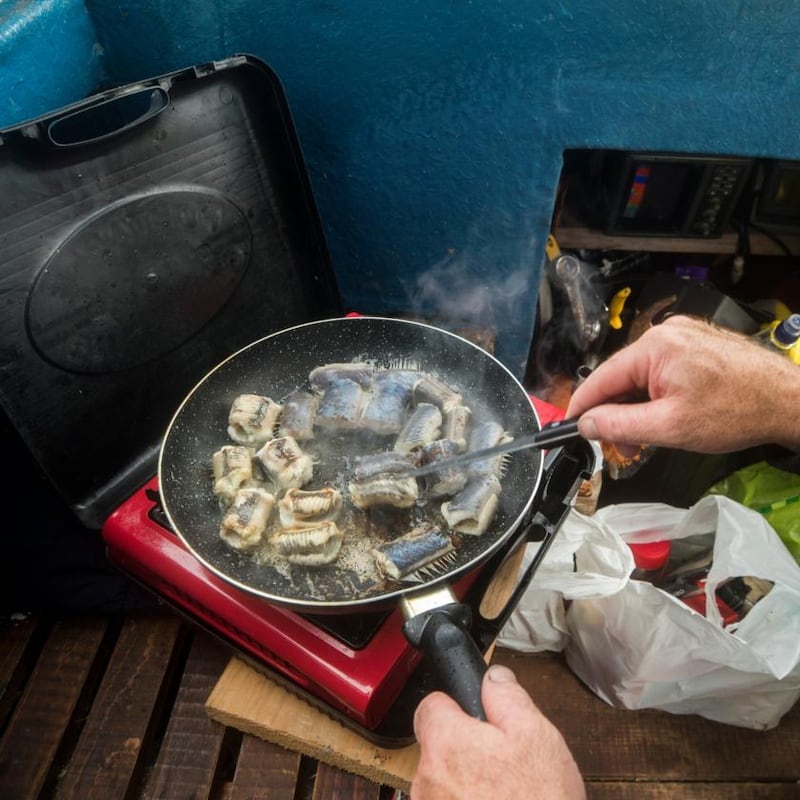
Next morning on the lake, McErlain puts the pan on for an eel breakfast, and it’s at this point that McStocker informs me that she is actually a vegetarian and has been since she was 14. Nevertheless, she is proud to be one of just three women on the water, breaking new ground while helping maintain an ancient heritage.
“I know how much the eel suppers mean to people here, keeping the traditions going. And I don’t have a problem with people eating the eels, because I know they’re fished in a sustainable way. I’d be more concerned at this stage about the sustainability of Lough Neagh people.”
According to McErlain, women have always been central to the business of fishing on Lough Neagh.
“I had a great grand-aunt Sally-Anne Murphy; she was known as the Pollan Woman. When the boats came in she used to wheel the barrow 15 miles to Ballinascreen [in Co Derry] in her bare feet. If it hadn’t been for the women on the shore, the men couldn’t have been on the water.”













